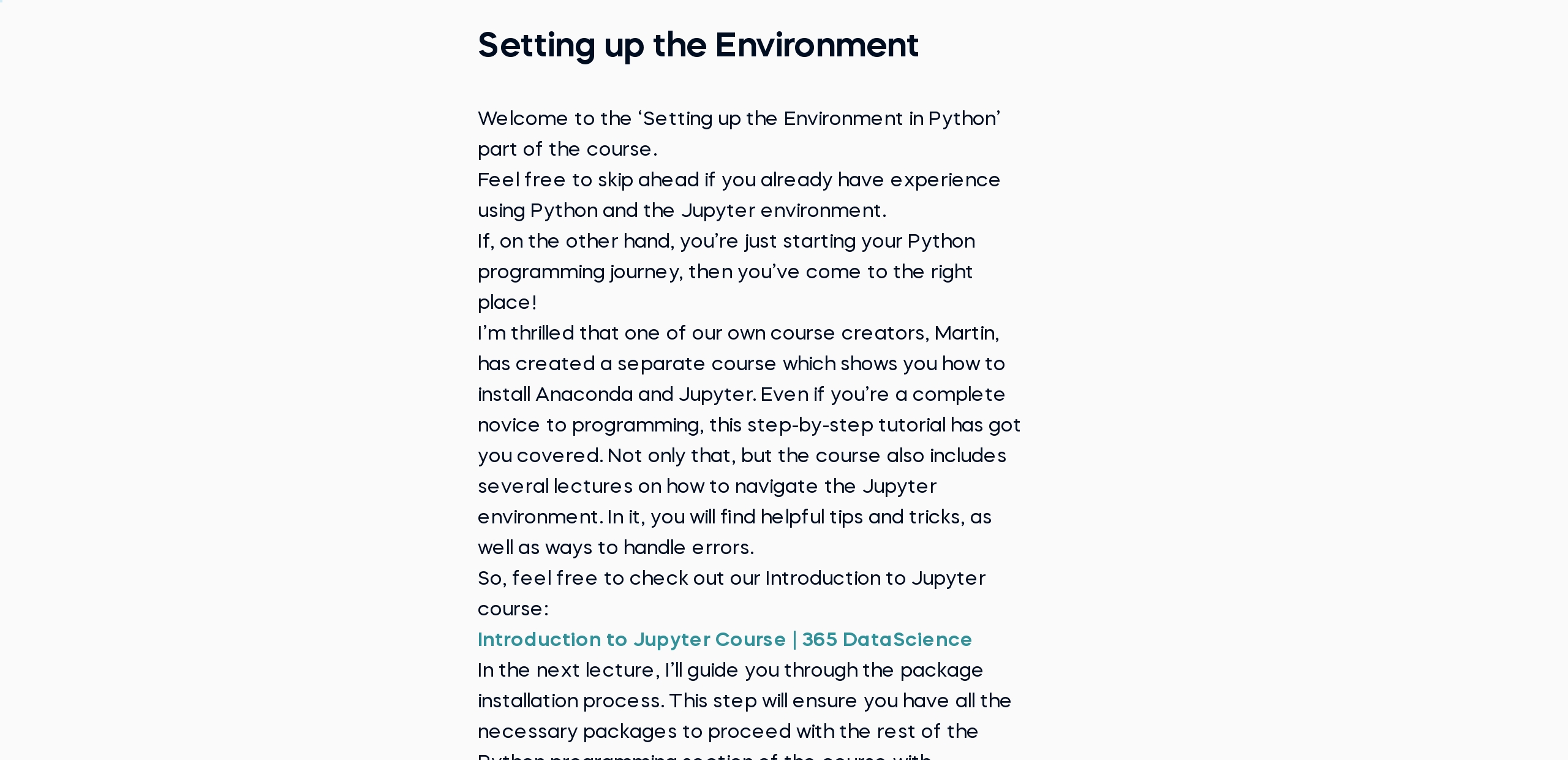Customer Analytics in Python
Blend retail marketing understanding with data analytics skills: Master customer segmentation and purchase behaviour modeling in Python
 Start for Free
Start for Free
What you get:
- 10 hours of content
- 18 Interactive exercises
- 124 Downloadable resources
- World-class instructor
- Closed captions
- Q&A support
- Future course updates
- Course exam
- Certificate of achievement
Customer Analytics in Python
 Start for Free
Start for Free
What you get:
- 10 hours of content
- 18 Interactive exercises
- 124 Downloadable resources
- World-class instructor
- Closed captions
- Q&A support
- Future course updates
- Course exam
- Certificate of achievement
$99.00
Lifetime access
 Start for Free
Start for Free
What you get:
- 10 hours of content
- 18 Interactive exercises
- 124 Downloadable resources
- World-class instructor
- Closed captions
- Q&A support
- Future course updates
- Course exam
- Certificate of achievement
What You Learn
- Master K-means clustering to identify distinct customer groups based on common characteristics
- Combine Principal Component Analysis (PCA) and K-means clustering for improved customer segmentation
- Analyse purchase quantity elasticity to understand how pricing and other factors influence customer buying decisions
- Model purchase incidence through probability of purchase elasticity to gain insights on how sensitive customers are to changes in marketing and sales strategies
- Leverage deep learning for powerful predictions about the future behaviour of clients
- Acquire domain-specific skills in retail analytics and differentiate your data scientist resume
Top Choice of Leading Companies Worldwide
Industry leaders and professionals globally rely on this top-rated course to enhance their skills.
Course Description
Learn for Free

1.1 Course Introduction
7 min

1.2 Segmentation, Targeting, Positioning
7 min

1.3 Marketing Mix
8 min

1.4 Physical and Online Retailers: Similarities and Differences.
7 min

1.5 Price Elasticity
8 min

2.1 Setting up the environment
1 min
Curriculum
Topics
Course Requirements
- You need to complete an introduction to Python before taking this course
- Basic skills in statistics, probability, and linear algebra are required
- It is highly recommended to take the Machine Learning in Python course first
- You will need to install the Anaconda package, which includes Jupyter Notebook
Who Should Take This Course?
Level of difficulty: Advanced
- Aspiring data scientists
- Current data scientists who are passionate about acquiring domain-specific knowledge in retail analytics
Exams and Certification
A 365 Data Science Course Certificate is an excellent addition to your LinkedIn profile—demonstrating your expertise and willingness to go the extra mile to accomplish your goals.

Meet Your Instructor

Nikolay is a Director of Data Science and Automation at KBC Group. He has a solid background in marketing analytics, risk modeling, and research. A Master’s degree in Science and a Ph.D. in Economics and Business Administration have given Nikolay vast experience in the academic world. He spent over six years in the field of research at HEC Paris, BI Norwegian Business School, and the University of Texas at Austin, U.S. In addition, Nikolay has worked on numerous projects for Coca-Cola Hellenic and Shawbrook Bank (UK) that involved building highly accurate quantitative models and solutions for customer portfolio management, credit risk, social media marketing research, and psychological targeting.
What Our Learners Say
365 Data Science Is Featured at
Our top-rated courses are trusted by business worldwide.